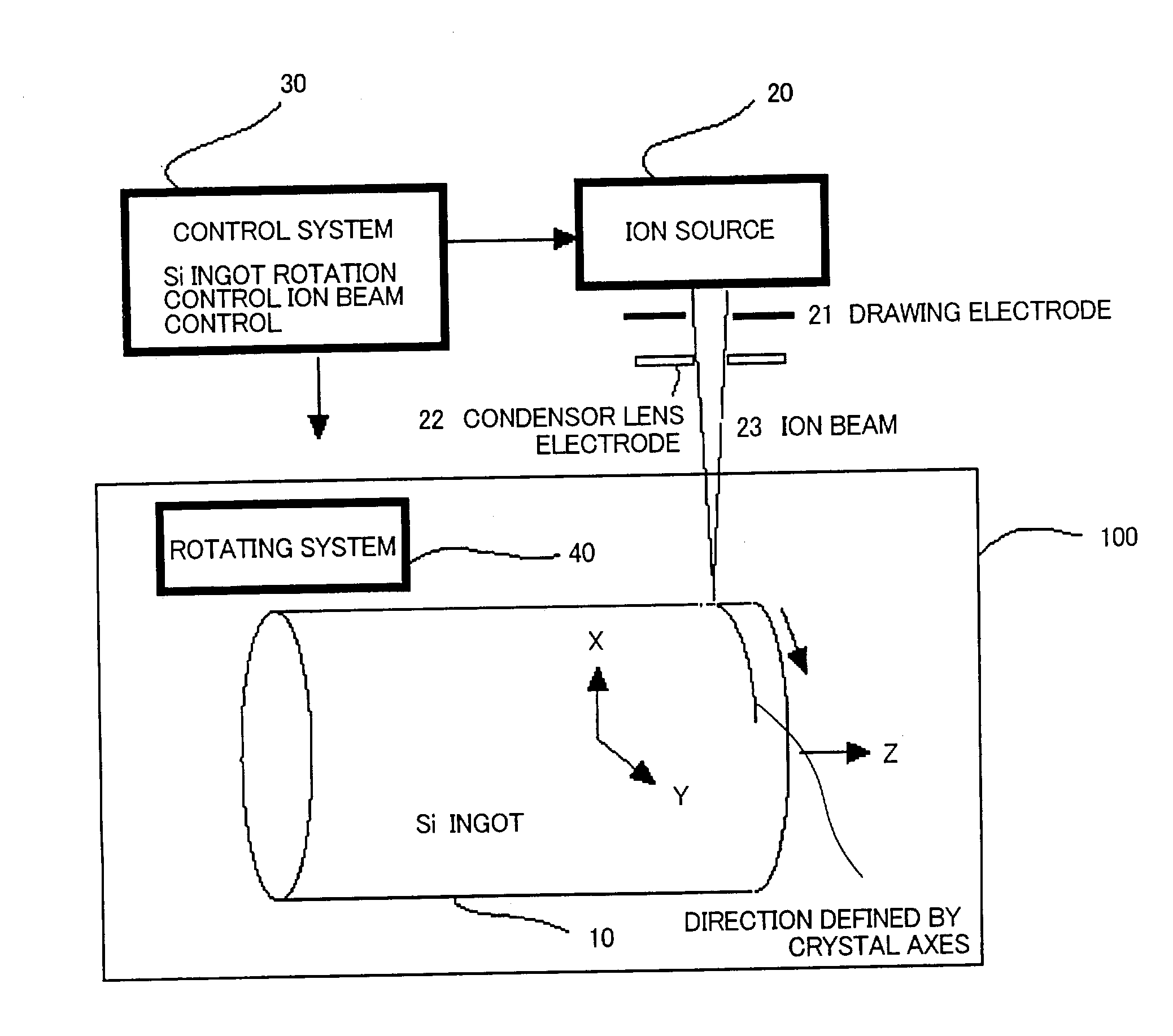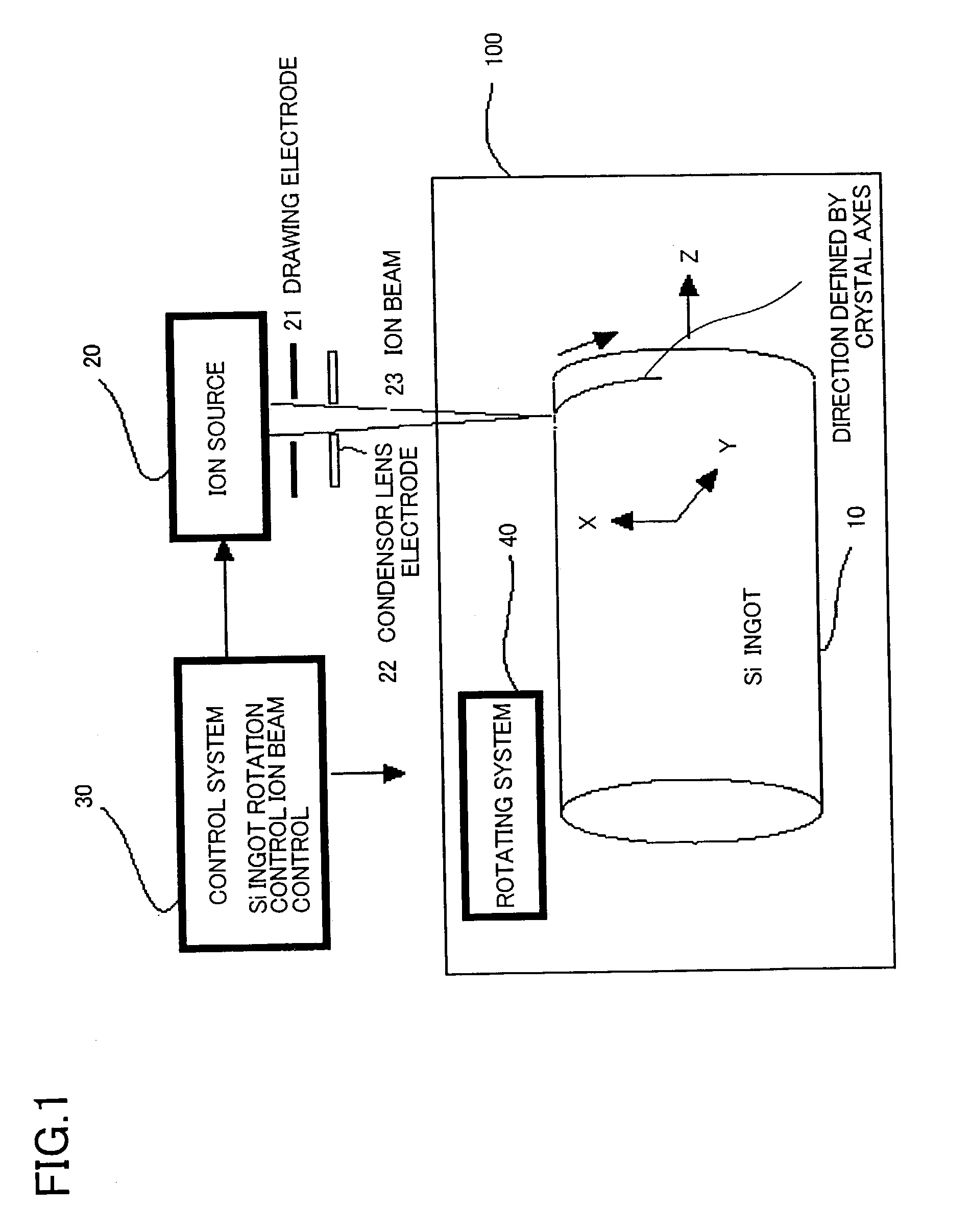Cutting method and apparatus for ingot, wafer, and manufacturing method of solar cell
a manufacturing method and technology of solar cells, applied in the direction of sustainable manufacturing/processing, final product manufacturing, etc., can solve the problems of limited thickness, solar cell needs light absorption, and the present status is near a technical limit, so as to achieve the effect of shortening the time for cutting a single crystal ingot, reducing the cost of production, and increasing the thickness
- Summary
- Abstract
- Description
- Claims
- Application Information
AI Technical Summary
Benefits of technology
Problems solved by technology
Method used
Image
Examples
Embodiment Construction
]
[0072] A preferred embodiment of the present invention is described with reference to the figures. FIG. 1 schematically shows a structure of an embodiment of the present invention. An apparatus according to an embodiment of the present invention comprises an ion source 20, an ion emitting electrode 21 and a condenser lens electrode 22 so as to condense ion beam 23 onto the surface of silicon ingot 10.
[0073] The lattice defects are generated on the surface because the mean free path of ion beam 23 in the surface of silicon ingot is short. The scanning direction of the ion beam 23 is along a "direction defined by crystal axes" (i,e, along a direction of a plane defined by x-and y-axes or a direction defined by a plane transverse to z-axis) of the silicon ingot 10 shown in FIG. 1.
[0074] It is possible that a mask (not shown in the figures) of a pattern having an open part irradiated with ion beam 23 covers silicon ingot 10.
[0075] In producing the approximately cylindrical silicon ingo...
PUM
| Property | Measurement | Unit |
|---|---|---|
| Lattice constant | aaaaa | aaaaa |
| Crystal structure | aaaaa | aaaaa |
| Defects | aaaaa | aaaaa |
Abstract
Description
Claims
Application Information
 Login to View More
Login to View More - R&D
- Intellectual Property
- Life Sciences
- Materials
- Tech Scout
- Unparalleled Data Quality
- Higher Quality Content
- 60% Fewer Hallucinations
Browse by: Latest US Patents, China's latest patents, Technical Efficacy Thesaurus, Application Domain, Technology Topic, Popular Technical Reports.
© 2025 PatSnap. All rights reserved.Legal|Privacy policy|Modern Slavery Act Transparency Statement|Sitemap|About US| Contact US: help@patsnap.com



